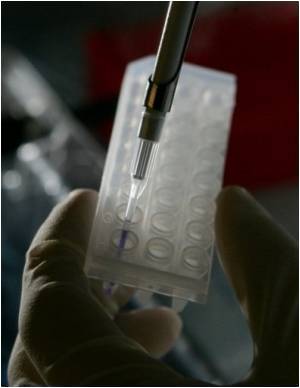A diet high in antioxidant-rich fruits, vegetables and nuts can lower the risk of developing type 2 diabetes in women, finds a study.
Highlights:
- Consumption of antioxidant-rich foods linked to a lower risk of type 2 diabetes
- The risk of diabetes lowered by 27% in women who consumed high amounts of antioxidants
- Foods rich in antioxidants are blueberries, strawberries, prunes, dark chocolate and green tea
Antioxidants can Lower the Risk of Type 2 Diabetes
Studies conducted earlier have shown that a diet rich in fruits and vegetables can lower the risk of certain cancers and cardiovascular conditions. The current study has shown that such a diet is similarly associated with a reduced risk of type 2 diabetes.Based on the previous findings, the research team suspected that certain antioxidants such as lycopene, flavonoids, vitamins C and E were associated with a reduction in type 2 diabetes risk However, these studies looked only at isolated nutrients and not at the total antioxidants in the diet. Therefore, the research team wanted to verify whether the antioxidants in the overall diet is associated with the risk of diabetes.
The research team used data from the E3N cohort study which recruited French women in 1990, then aged between 40 and 65 years. All the participants were free from diabetes and cardiovascular disease at the time of inclusion of the study. More than 64,000 women were followed from 1993 to 2008. At the beginning of the study, the participants completed a dietary questionnaire including detailed information on more than 200 different food items.
The team used the dietary information together with an Italian database to find the antioxidant capacity of a large number of different foods. A score for total dietary antioxidant capacity was calculated for each participant. During the follow-up period, the team analyzed the associations between the antioxidant capacity score and the risk of diabetes occurrence.
The findings showed that the risk of diabetes reduced with increased antioxidant consumption up to a level of 15 mmol/day. Increasing dietary antioxidants capacity to this level could be achieved through consumption of foods rich in antioxidants such as blueberries, strawberries, walnuts, hazelnuts, prunes, dark chocolate, and tea.
The risk of diabetes reduced by 27% in women with the highest antioxidant scores compared with those with the lowest scores.
The foods and beverages that contributed to the highest antioxidant capacity score were fruits, vegetables, tea and moderate consumption of red wine. However, the authors excluded coffee consumption from the analysis, despite its high antioxidant content, because coffee has already been shown to be associated with reduced risk of type 2 diabetes and might, therefore, mask the effects of antioxidants from other sources.
“This link persists after taking into account all the other principal diabetes risk factors: smoking, education level, hypertension, high cholesterol levels, family history of diabetes and, above all, body mass index (BMI), the most important factor,” clarifies Francesca Romana Mancini, the first author of this study.
“This work complements our current knowledge of the effect of isolated foods and nutrients, and provides a more comprehensive view of the relationship between food and type 2 diabetes,” said, Guy Fagherazzi, the lead researcher in charge of diabetes research in the E3N study. “We have shown that an increased intake of antioxidants can contribute to a reduction in diabetes risk.”
The findings have shown that antioxidants counterbalance the effect of free radicals, which damage the cells. But there are more specific actions in addition to the antioxidant capacity like the sensitivity of cells to insulin. The team hopes to find the action mechanism in their next research.
Antioxidants
Antioxidants are compounds found naturally in fruits and vegetables. These compounds help prevent free radical damage and protect against diseases. Some of the antioxidants are beta-carotene, lutein, lycopene, vitamin A, C, E, and selenium. The presence of the color indicates a specific antioxidant in that food. Berries, broccoli, cabbage, spinach, legumes, green tea, black tea and red wine contain high amounts of antioxidants.Cooking temperatures and methods can increase or decrease antioxidant levels. High temperature can destroy antioxidants. Cooking on flat metal surfaces without oil and microwaving can maintain the highest antioxidant levels.
References:
- Francesca Romana Mancini et al. Dietary Antioxidant Capacity and Risk of Type 2 Diabetes in the Large Prospective E3N-EPIC Cohort, Diabetologia (2017). DOI: 10.1007/s00125-017-4489-7
- Antioxidants - (https://medlineplus.gov/antioxidants.html)
- What are Antioxidants? - (http://www.ift.org/knowledge-center/learn-about-food-science/food-facts/what-are-antioxidants.aspx)
Source-Medindia
















